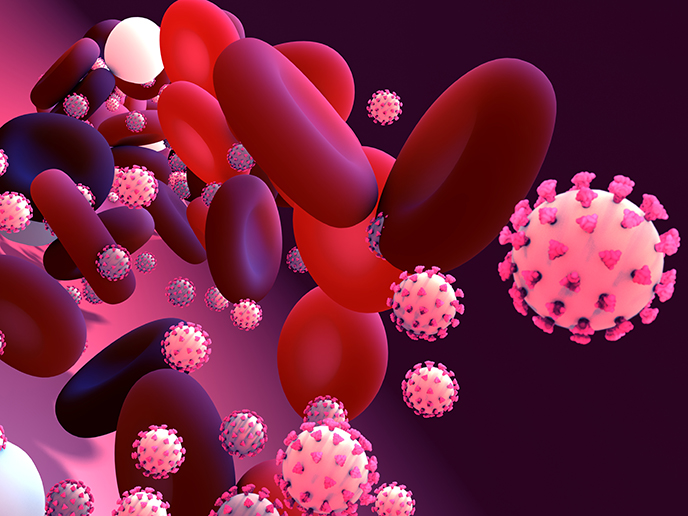Investigating blood flow in severe COVID-19 patients
Researchers supported by the EU-funded LUCA, VASCOVID and LASERLAB-EUROPE projects studied COVID-19 from a different perspective. In what is likely the first study of its kind, they examined how the disease affected microcirculation – the circulation of blood in the smallest blood vessels – in seriously ill COVID-19 patients. Their findings have been published in the journal ‘Critical Care’. COVID-19 is primarily a respiratory disease. It usually begins as an infection in the upper respiratory airway and then spreads beyond the nose, nasal cavity and pharynx, progressing to severe respiratory disease. However, given that the SARS-CoV-2 virus has also been detected in many other organs, some scientists believe COVID-19 could be considered a systemic vascular disease chiefly affecting the vascular endothelium. The vascular endothelium is a thin layer of cells lining the interior surface of the entire cardiovascular system – from the heart to arteries, veins and capillaries – and forming a critical boundary between the tissues and the circulating blood.
Non-invasive evaluations
To study how COVID-19 affects microcirculation, the researchers monitored the endothelium of patients with acute respiratory distress syndrome admitted to different intensive care units in Brazil, Mexico and Spain. They carried out their evaluations at the bedside using a non-invasive, portable near-infrared spectroscopy (NIRS) device. By simply placing the NIRS probe on the forearm, the team was able to non-invasively measure local tissue/blood oxygen saturation (StO2) and local haemoglobin concentration. This was followed by a vascular occlusion test to obtain dynamic StO2 parameters. It involved placing a blood pressure cuff around the arm, rapidly inflating it, keeping it inflated for 3 minutes, and then rapidly deflating it to measure the oxygen saturation, metabolic rate and microvascular reactivity of the tissues. The study revealed that patients with severe COVID-19 showed alterations in the systemic microcirculation, indicating endothelial dysfunction – a condition that causes chronic chest pain. These alterations are associated with the degree of severity of the disease and cannot be explained by the use of sedative agents or drugs used to constrict blood vessels. “These preliminary results are highly relevant in several aspects,” noted study lead author Dr Jaume Mesquida of VASCOVID project partner Parc Taulí Hospital Universitari, Spain, in a news release posted on ‘ScienceDaily’. “First, we have reinforced the idea that the severe forms of COVID-19 are a systemic disease that affects the microvessels of the body. Second, we established that the severity of the disease, mainly determined by the pulmonary involvement, correlates with the impairment of the microvascular response in the peripheral skeletal muscle. And finally, we can non-invasively monitor this microvascular impairment. Such findings are promising since a non-invasive tool might be helpful in the early detection of potentially critical patients. Also, it will help us in selecting and monitoring the response to novel therapies targeting the microvessels in the course of COVID-19.” The LUCA (Laser and Ultrasound Co-Analyzer for thyroid nodules) and VASCOVID (PORTABLE PLATFORM FOR THE ASSESSMENT OF MICROVASCULAR HEALTH IN COVID-19 PATIENTS AT THE INTENSIVE CARE) projects are coordinated by the Institute of Photonic Sciences, Spain. LASERLAB-EUROPE (The Integrated Initiative of European Laser Research Infrastructures) is coordinated by the French National Centre for Scientific Research. For more information, please see: LUCA project website VASCOVID project website LASERLAB-EUROPE project website
Keywords
LUCA, VASCOVID, LASERLAB-EUROPE, coronavirus, COVID-19, SARS-CoV-2, blood, microcirculation, respiratory, vascular, microvascular, endothelium, endothelial



